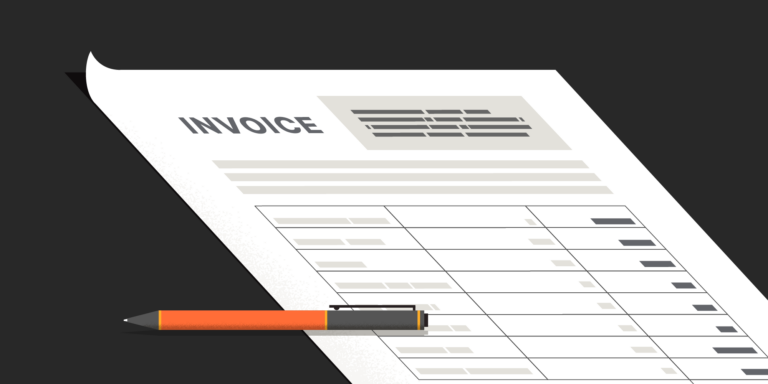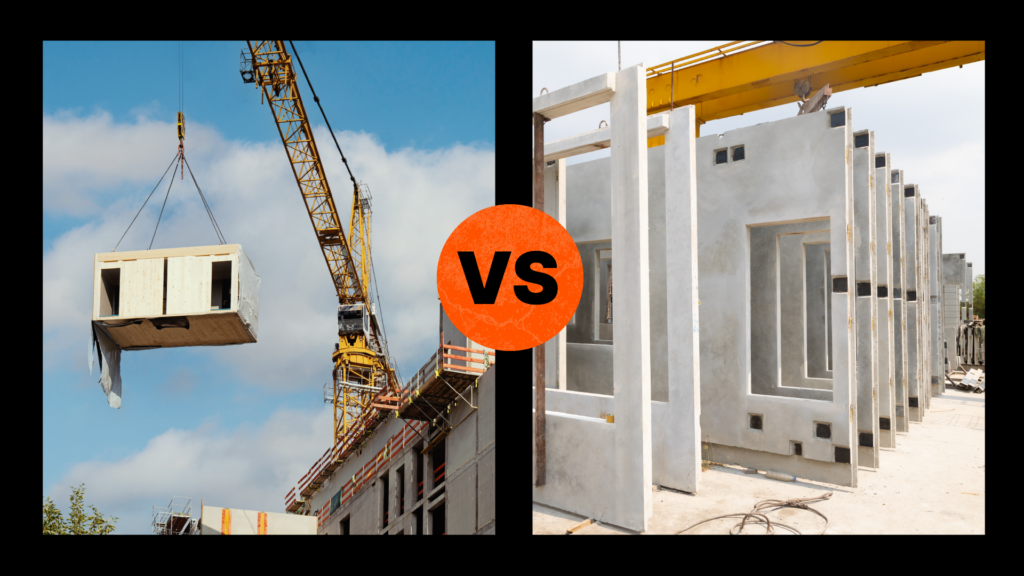— 8 min read
A Contractor’s Guide to Construction Invoicing
Last Updated Aug 7, 2024
Last Updated Aug 7, 2024

Invoicing in construction is complex. Unlike most retail companies that only require a simple bill of sale or list of line items on an invoice, most construction businesses have to provide a collection of detailed documents that provide proof of labor and materials supplied within the billing period.
In this article, we explore the construction invoicing process, including how to prepare an invoice or pay application and best practices for billing.
Table of contents
What is a construction invoice?
A construction invoice documents the details submitted by contractors and suppliers to various players in a construction project, listing the owed amounts for completed work, materials, labor charges and more over a specified time duration.
The details of a construction invoice will vary based on the project size, the contract and who is submitting the invoice. For instance, a residential project invoice will be much less complex than the invoice a general contractor (GC) submits to the owner of a large public project.
Invoicing Construction Projects
The invoicing process will vary based on the contract agreed upon between the owner and the general contractor, but larger construction projects will most likely be on a progress billing structure.
Progress Billing
Progress billing, also known as milestone billing, pays contractors based on the percentage of work they have completed. This method of invoicing is popular with both owners and contractors. It allows owners to control cash outflows to match project progress. This way, contractors don’t have to wait until the end of the job to bill; instead, they bill incrementally as the job goes along.
Typically, issuers make payments on a monthly schedule, but they may also send them at certain completion percentages (e.g., when the job is 30%, 60%, and 100% complete).
Common Contract Structures
The contract ultimately decides how and when to make payments. There are several different construction contract payment structures. A few of the more common are:
While the type of contract doesn't necessarily dictate the invoicing or payment schedule, it does affect the amount and type of information required in the invoice or payment application.
Retainage
Retainage (or retention) is a percentage of your payment that the GC or owner will hold until the project or job is complete. The contract should provide details about the retainage percentage, which typically falls somewhere between 5–10%.
Keep in mind that many states require variable retention, meaning that retainage is reduced or paid out once a certain percentage of the contract is completed. Within statutory requirements, contractors can typically negotiate retainage terms.
A subcontractor involved early in a multi-year project — for example, a foundation contractor — likely doesn't want to wait for substantial completion of the project to collect 10% of the contract value. They may be able to negotiate for early release of retainage after a successful foundation inspection.
The prime contract will determine whether the General Contractor (GC) can hold retention against subcontractors, but on most projects where the owner holds retainage, the GC will also do so to maintain consistent cash flow. This will, of course, affect the invoicing between all parties.
"Our billing process went from 2 weeks to 10 minutes."
Learn how a design-build GC dramatically cut billing time and improved invoicing accuracy.

What’s in a construction invoice?
The specific line items of an invoice will vary depending on a few different factors. For instance, who is sending the invoice, how big is the job, and what are the requirements for payment based on the prime contract.
Residential or renovation contractors often prepare a simple invoice with their company name, a description of the work completed, the amount payable and the payment terms. But on most commercial and public projects, contractors will invoice using a payment application.
Invoice vs. Payment Application
Payment applications and invoices are both a part of the invoicing process in a construction project.
Invoices are generally straightforward bills from vendors or contractors on smaller jobs or residential projects. Payment applications, on the other hand, are sent by GCs or subcontractors on larger jobs that are sent with multiple documents, each containing supporting evidence of the work completed in order for approval for payment.
For instance, a supplier will send an invoice to a GC after completing a delivery. A GC will send a payment application to the owner along other documentation providing evidence to the labor, time, and materials they are billing for.
Even with variations, most invoices will follow the industry standard template, the AIA G702 Application & Certificate for Payment, which requires the following details:
- Project/contract information
- Contractor, client, and architect contact information
- Invoice number and reference details
- Description of services/work provided
- Original contract price
- Amount of approved change orders
- Total of materials incorporated and/or stored on site
- Retainage amount withheld
- Amount previously billed
- Total amount currently due
On other projects, vendors and subcontractors may not be responsible to adhere to the prime contractor's invoicing standards, and can simply send over their own invoice they send across all jobs. It will then be the GC’s responsibility to adhere to the prime contract on behalf of all hired subcontractors by submitting additional documentation alongside their payment application.
Documentation for Payment Applications
As mentioned earlier, GCs will have to send further documentation for their payment applications to be accepted. These documents provide additional support for the amount billed.
Schedule of Values
A Schedule of Values, or SOV, is a list of every work item on a project, along with each item’s value or cost. This comprehensive work list represents the entire construction project and the entire contract price, from beginning to end.
The schedule of values is usually created during the creation of the Work Breakdown Structure (WBS) of the project. The very first step in the drafting process of a schedule of values is breaking down work into line items. Then, prices can be assigned to separate entries. Depending on the level of detail put into a work breakdown structure, this can almost take care of itself.
When included in a payment application, the schedule of values is often called a continuation sheet. For each billing period, this sheet provides the status of completed work, the costs associated with each line item and the current amount of payments made and to be made. Providing this information helps property owners, general contractors and lenders review the pay app quickly and confirm the progress claimed.
Change Orders
Contractors should include all approved change orders that are invoiced in the current billing cycle along with the payment application. The amounts of each change order should also be reflected in the schedule of values or continuation sheet.
Daily Reports
Daily reports, which many consider one of the more important aspects of successful project management, document the daily activities on a project. Including daily reports in a pay application can help prove the completion and timing of work, potentially speeding up the pay app approval process.
Photo Documentation
Adding photo documentation to your pay apps can provide clarity of the day-to-day events and help keep all parties informed. Especially with the convenience of cell phone photo quality, this step is an easy way to provide evidence if your company is facing a claim or dispute.
Vendor Invoices
In most cases, general contractors will need to keep record of and submit all of the invoices that other contractors, subs, or suppliers have sent them in order to receive the cash to pay those invoices. These invoices also keep record of materials delivered and smaller jobs completed.
Lien Waivers
A lien waiver is essentially the construction industry's version of a receipt for payment. The document waives the contractor's right to file a construction lien for the amount paid. Typically, the party making payment requires the party receiving payment to sign a lien waiver.
Stay updated on what’s happening in construction.
Subscribe to Blueprint, Procore’s free construction newsletter, to get content from industry experts delivered straight to your inbox.

Invoicing Best Practices
Though invoicing in construction is complex, setting expectations, maintaining organized records, and utilizing management tools can simplify the process exponentially.
Set Expectations Early
Having set expectations for invoicing can deter a project from blockage created by payment disputes between the many players of a project. When creating invoicing standards, Owners, contractors, and specialty contractors must set clear contract language in advance that outlines the invoice expectations and payment timelines.
For instance, if the contract includes retainage, the owner or GC generally withholds 5-10% of the dollar amount from each progress payment. This practice often flows down to subcontractors and even sub-subcontractors. If subcontractors are unaware that retainage will affect their payment timeline, they may halt their work until resolving the dispute, thereby blocking other aspects of the project from completion.
Keep Organized Records
Keeping organized records of your costs will save time on a project in more ways than one. For instance, coding all costs correctly according to the project can make the invoicing process much more efficient. Additionally, keeping organized records of correct coding can help solve disputes between owners, contractors, and subcontractors.
Take Advantage of Invoicing Software & Technology for Construction
Increasingly, contractors and owners alike rely on software to track project budgets, invoices and costs. Construction management software can often integrate directly with accounting software to simplify and even automate the exchange of project and financial data. By establishing a single source of truth for tracking costs, change orders, and compliance to ensure a faster, more efficient invoicing process.
Invoicing construction projects requires a lot of planning, detail, and communication from all parties. Mismanaging invoices can be detrimental to contractor's financial position -- and the overall success of a project.
Understanding the expectations for an invoice can expedite the payment process, thereby helping to sustain cash flow and healthy relationships among owners, contractors, and vendors.
Was this article helpful?
Thank you for your submission.
100%
0%
You voted that this article was . Was this a mistake? If so, change your vote here.
Scroll less, learn more about construction.
Subscribe to The Blueprint, Procore’s construction newsletter, to get content from industry experts delivered straight to your inbox.
By clicking this button, you agree to our Privacy Notice and Terms of Service.
Categories:
Tags:
Written by
Brittney Abell
12 articles
Brittney Abell joined Procore after 6 years as an accounting manager for a commercial general contractor, overseeing accounts payable and receivable. Before that, she worked as a contract administrator for an architecture & design firm for 6 years. She has worked on a variety of building projects, including travel stops, restaurants, hotels, and retail warehouses raging from $2M to $20M. She lives in Louisville, Kentucky
View profileDavid Giali
10 articles
David is a Content Marketing Associate at Procore. He is an experienced writer in the software industry with close to 1000 published articles. Before writing, he worked in for a specialty contractor as an estimator and finish contractor. David spends his time outdoors with his wife and dog, experimenting with film photography, and writing music.
View profileExplore more helpful resources

Mission Critical Construction: Strategies for Success
Mission critical construction involves building structures whose functions cannot afford to fail, as any disruptions can lead to significant consequences for society. Keeping data centers, hospitals, power plants and other...

Modular Construction and MEP: A Collaborative Pairing
In an age of supply chain disruptions, workforce shortages, and rising material costs, off-site construction — including modular construction methods and prefabricated materials — is surfacing as a multipurpose solution....

Connected Construction: Transforming the Industry Through Integration
Construction projects are becoming increasingly complex, so companies need to innovate to accurately and profitably complete these modern structures. Connected construction — using technology and data to improve communication, processes...

Off-Site Construction: Prefab vs. Modular
As the construction world becomes ever more competitive, deadlines get tighter and the margin for error gets slimmer, project owners around the world are always looking for an edge. Thanks...